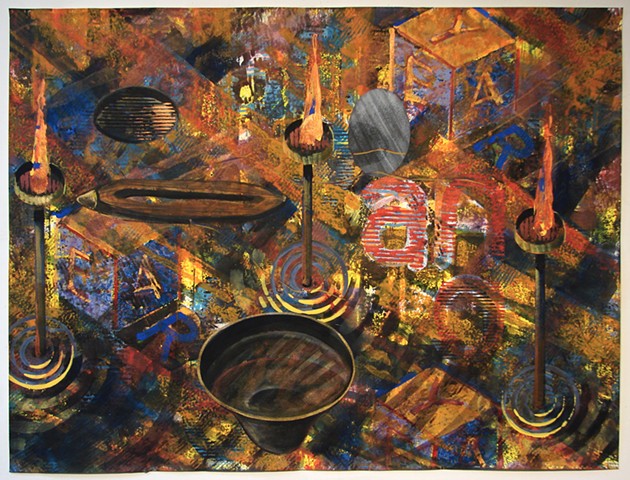New Year's Loom
Light and Movement into the New Year
Snow on the roof melts and water drips off the edge of the south-facing front porch, each drop catching sunlight. The drops cascade directly in front of three large windows and their lighted movement, in seemingly random groups becomes what looks like a pianola roll – the drips becoming the holes, the background what is seen across the street is the invisible page around the holes. Light and movement create the semblance of a musical score dropping vertically across the open space – lighted notes drifting in curtain-like passages. The dripping ice silently sings in rhythm, a dangling melody from the roofline, pulsing with gusts of wind in the sunlight of a December afternoon.
Ice and water reflect differently – frozen and transmitting light, or as liquid transmitting reflected imagery, mirrored versions that clarify themselves in the pools of a moving stream. The light glancing off a row of icicles is the slowed down vibrations that we catch in the reflected imagery that is pulled and stretched in the wind-blown puddle forming below. The speed of light is given as a constant, but of course our perception of light is never that steady, especially in the prisms and half frozen pools of wintertime water.
Shadows of ravens race across the snow and stubble of the yard, breaking up against the cedar trees’ berries and branches then reforming on the ground as the birds rush towards a morning roosting spot in the sun. Patches of snow in long strands lie like clouds on the ground beneath a clear blue sky. The spaces between pinon and cedar branches create shapes that in the bright light seem to defy depth of field and later stand out like lanterns as the day fades in sunset. From blindingly bright with deep shadows, to the flickering of the western light at the horizon pushing its last light through the spaces between trunks and low branches, the day unfurls its sun-blazed path. We watch time as a progression of light, the surface of our surroundings becoming an endlessly detailed sundial.
A lifelong light burns from without and within us. During the Paleolithic, paintings lit by torchlight were worked and reworked in the depths of caves. Like today when color reflected off the surface of paintings can create a glowing memory that we carry within us, light continues to refer to time as we move along the course of our days and years. Thinking back to cave art, what did we see then? What are we seeing now remembering it? Translations of light and movement are taken in by us, as we are carried by it for the span of our days.
